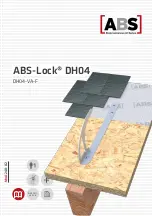
Specifications subject to change without notice. All dimensions in inches. © Copyright 2012 The Connor-Winfield Corporation
Application Note
AN2093
Page
18
Revision
P01
Date
10 May 2013
2111 Comprehensive Drive
Aurora, Illinois 60505
Phone: 630-851-4722
Fax: 630- 851- 5040
www.conwin.com
Multi-Layer Board Design / Thermal Considerations
4.3 Controlling Thermal Transfer / Transients
Controlling thermal transients is critical for proper
operation of all OCXOs. Any sudden changes in air-flow,
or temperature will drastically effect short term frequency
stability. Ambient system, cabinet, or enclosure
temperature must always transition under the maximum
stated rate identified on the product data sheet. Typical
'
tºC / t (minutes) rates for OCXO range from 0.5 to
1ºC/minute. Any additional heat generated by nearby
integrated circuits, or mechanical parts could cause the
internal oven temperature to fall out of equilibrium and no
longer maintain frequency stability. The OCXO controller
can only self-regulate oven core temperature if thermal
energy conducted through the printed circuit board is
kept to a minimum.
Avoid the following, as they will cause the oven core to
overheat or drop out of thermal regulation.
•
Placing the OCXO near heat generating
components (electrical or mechanical that could
bleed thermal energy into the OCXO causing
the oven core to overheat, even when the
ambient air is within the operating limits)
•
Placing the OCXO into intermittent air flow paths
(ie switched or variable speed fans) as this will
cause the oven core to fall out of thermal
regulation
•
On multi-layer boards avoid top level copper
floods, pours and fills under the OCXO land
pattern that would contribute to excessive heat
gains/losses through the printed circuit board
resulting in an inability for the oven core to
maintain thermal equilibrium.
Avoid layouts as seen in FIGURE 18-02
4.4 Controlling Airflow
Shielding the OCXO from intermittent or variable speed
airflow paths will minimize small temperature fluctuations
and substantially improve short / medium term stability.
This can best be accomplished by shielding the OCXO
behind taller non-heat generating components or
mechanical parts to create a physical barrier, or with the
use of a metal or plastic cover.
See figures 18-01 and 18-02
Figure: 18-01
Good Choice for OCXO placement. OCXO is outside of
air tunnel, not near any heat generating components
Figure: 18-02
Poor location for OCXO. Variable speed or switched fans
create large temperature fluctuations
Содержание UM-20
Страница 28: ...W J o on O O O m 5 0 u G O O O O O Omwmww 3 O f 0 016679 Lager 1 TOP ...
Страница 29: ...016676 Lager 1 2121 ...
Страница 30: ...016676 Top Soldermask K W 0 0 o I 0 I O O 00 I o o oO 0 0 nu 0 O D I O nu I I IIII oo o oo II II ...
Страница 31: ...016676 Bottom Soldermask ...
Страница 67: ...01123 4 56 ÿ 89 9 6 ÿ 3 3 9 ÿ ÿ 9 2 9 0123456 0123786 012359 ÿ B C D E F G D E H IJKLMNOP IJKLMQRP IJKLMOSÿ ...
Страница 81: ......
Страница 82: ......
















































